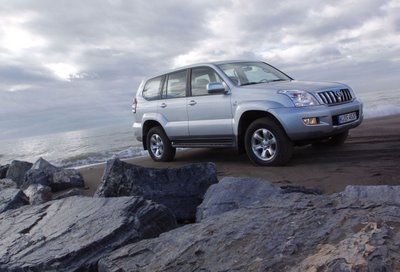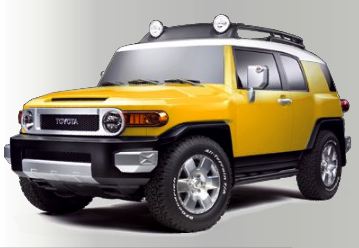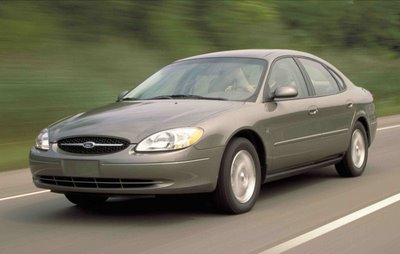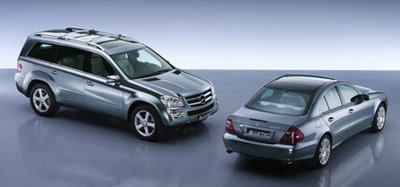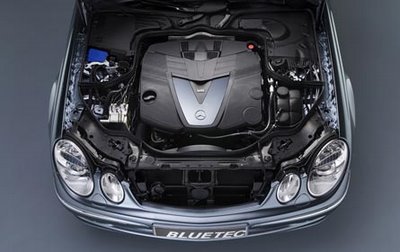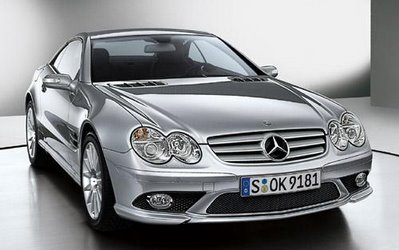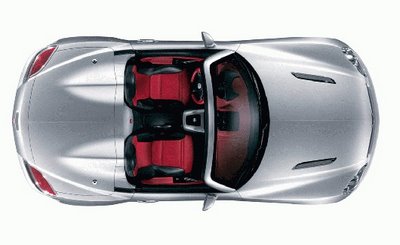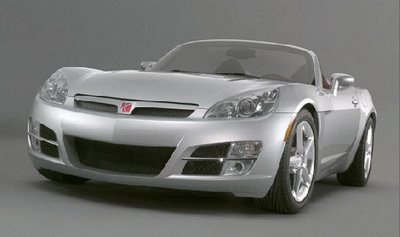BMW M5

BMW M5
The BMW M5 is the high-performance version of the BMW 5-Series automobile made by BMW M GmbH. M5 versions of the E28, E34, E39 and E60 5-Series have been made.
BMW M5 / E28 M5 (1984-1987)
The first M5, based on the E28 5-Series, made its debut at the 1984 Amsterdam Motor Show. It was the product of demand for an automobile with the carrying capacity of a saloon (sedan), but the overall performance of a sports car. It utilized the 535i chassis and an evolution of the engine from the BMW M1. The M5 was handbuilt by Motorsport technicians and at its launch was the fastest production saloon (sedan) in the world.
The M5 was offered in four different versions. The first version was the Left Hand Drive (LHD) Euro Spec M5. The second version was the Right Hand Drive (RHD) Spec M5. The third version was the North American Spec (NA or so-called 1988) M5. The fourth version was the South African (ZA) Spec M5.
The LHD, RHD Euro Spec M5s and the ZA spec M5s had the M88/3 powerplant which delivered 286 hp DIN (210 kW) whereas the North American 1988 M5 was equipped with the S38 6-Cylinder engine that had a catalytic converter, which reduced the power output to 256 hp DIN (191 kW). The S38 differed from the M88/3 in that it had 9.8:1 compression versus the M88/3's 10.5:1. The S38 also used a dual-row timing chain where the M88/1 used a single-row chain. Initially 500 were to be made for the US Market, BMW later increased production to as many as 1,370 units for the US and Canadian Markets although the generally accepted figure is 1,244 units sold.
The NA Spec Models are unique in that technically there were all finished in Schwarz (Black) with Natur (Tan) interiors. The otherwise virtually identical Canadian-Spec M5s were also available with Black interiors as an option however a handful of US Models were also equipped with Black interiors.
US VINs range from 2791000-2792000 and 2875000-2875320 (Car # 2791000 is not known to have been built and not all VINs are known to have been used)
While every NA-Spec E28 M5 was a 1988 Model Year car, production of North American specification M5s commenced in November of 1986 and ended in November of 1987. Excepting 96 units that were assembled in kit form at BMW's Plant in Rosslyn, South Africa, all E28 M5s were assembled by hand at BMW Motorsport in Garching.
With a total production of 2,191 the E28 M5 remains the rarest regular production BMW Motorsport car.
BMW M5 / Specification
DC91: (LHD EURO) => M88/3 engine 286 hp (DIN) 588 Units produced
DC92: (RHD EURO) => M88/3 engine 286 hp (DIN) 187 Units produced
DC93: (LHD US) => S38B35 engine 256 hp (SAE) 1,320 Units produced
DC98: (RHD SA) => M88/3 engine 286 hp (DIN) 96 Units produced (DC98 and DC99)
DC99: (RHD SA) => M88/3 naucer engine 286 hp (DIN)
BMW M5 / Performance
At the time of sale, BMW quoted the following (relatively poor) 0-60 times to give the impression that the E28 M5 did not outperform the more expensive, heavier and top-of-the-range E24 M635csi.
(Euro) - 286 hp 0-60 mph - 6.2 s. Top Speed: 153 mph
(USA) - 256 hp 0-60 mph - 6.5 s. Top Speed: 148 mph
BMW M5 / Special versions
Whilst BMW Motorsport did not build any special versions of the E28 M5, the German tuner Hartge produced the Hartge H35S-24, a 330 PS (325 hp/243 kW) version of the E28 M5. Main modifications over and above the standard E28 M5 were revised cams, a modified exhaust, modified Motronic ECU programming and a revised (and lowered) suspension setup.
Alpina limited their tuning efforts to the older M30 engine powered models.
Alpina B7 Turbo 300-330hp (0-60: 4,7 sec, 168mph)

BMW M5 / E34 M5 (1988-1995)
The E34 M5 was produced from 1988 to 1995, although sales in North America started in 1991 and ended in 1993. It was produced at BMW M GmbH in Garching, Germany and like the previous M5, was entirely hand-built. It utilized the 535i chassis which was produced at BMW's Dingolfing plant. Assembly was done either by a single M employee or a team of M employees and generally took about two weeks. It is rumored that the test drivers of the E34 M5 could determine who or what team made each specific M5, due to characteristic quirks of the handbuilt nature of the E34 M5. The engines were also built by hand by BMW M technicians. All of the E34 M5 powerplants were built to 5% of advertised output.
The early E34 M5 used an evolution of the 24-valve I6 found in the E28 M5 and E24 M635CSi/M6. Designated S38B36, the engine technically remains a 3.5 L, with a bore of 93.4 mm and stroke of 86 mm for a total capacity of 3535 cc. The added stroke is due to a new forged steel crankshaft, though the camshafts were also changed. Compression was up slightly (10:1 versus 9.8:1). Other adjustments made included an electronically controlled butterfly valve in the intake plenum which provided better low rpm and mid-range power. The engine also featured an improved flywheel, Bosch Motronic fuel injection, equal length stainless steel headers and three way ceramic catalysts.
The E34 M5 had a highly-tuned I6 engine called the S38B36. Originally it had a displacement of 3.6 L and produced 315 hp (235 kW), and 266 lb·ft @ 4750 RPM. Cars sold in North America and Switzerland which, due to a different catalytic converter, produced 310 hp (229 kW).
In May 1992, the engine displacement was increased to 3.8 L with the S38B38, except in North America, which continued with the 3.6 L engine. Power was now increased to 340 hp (250 kW) SAE . Also in 1992, a Touring version was introduced in LHD form only.
The M5 came with an unusual wheel design. From 1988-1992 the M5 featured the M-System wheels. These wheels were 8x17J, but came with a bolted-on wheel cover. Under the cover was a black 5-spoke alloy wheel. The press was critical of the design, often claming it gave the M5 the appearance of having "white-wall" tires. In 1992 BMW changed the design and a new cover was produced – the M-System II. The original intent of the M-System cover was to direct more air to the brake assembly to increase cooling. The cover actually integrated a fin assembly behind the cover. The M-System II covers, known as the "throwing stars" did not have as much capability to direct air to the brake assemblies. In late 1994, the M5 came with M Parallel wheels that did away with the cover.
BMW M5 / Specification
HD91 (88-91 LHD Euro) I6-24v 3.6 L - 232 kW/315 hp (DIN) (only available with 5-speed manual transmission)
HD92 (89-91 RHD Euro) I6-24v 3.6 L - 232 kW/315 hp (DIN) (only available with 5-speed manual transmission)
HD93 (90-93 LHD US) I6-24v 3.6 L - 232 kW/310 hp (SAE) (only available with 5-speed manual transmission)
HC91 (92-94 LHD Euro) I6-24v 3.8 L - 250 kW/340 hp (SAE) (only available with 5-speed manual transmission)
HC91 (94-95 LHD Euro) I6-24v 3.8 L - 250 kW/340 hp (SAE) (only available with 6-speed manual transmission)
HC92 (92-94 RHD Euro) I6-24v 3.8 L - 250 kW/340 hp (SAE) (only available with 5-speed manual transmission)
HC92 (94-95 RHD Euro) I6-24v 3.8 L - 250 kW/340 hp (SAE) (only available with 6-speed manual transmission)
HJ91 (92-94 LHD Euro Touring) I6-24v 3.8 L - 250 kW/340 hp (SAE) (only available with 5-speed manual transmission)
HJ91 (94-95 LHD Euro Touring) I6-24v 3.8 L - 250 kW/340 hp (SAE) (only available with 6-speed manual transmission)
89-95 (ECE/GB/USA) - (no automatic transmission available)
BMW M5 / Performance
89-92 (Euro) I6-24v 3.6 L - 232 kW/315 hp 0-60 mph - 6.3 s. Top speed: 155 mph (electronic limited)
92-95 (Euro) I6-24v 3.8 L - 250 kW/340 hp 0-60 mph - 5.9/5.7 sec*. Top speed: 280 km/h (173 mph) (electronic limited) 295 km/h (183 mph) (without electronic limiter)
91-93 (USA) I6-24v 3.6 L - 229kW/311 hp 0-60 mph - 6.4 s. Top speed: 155 mph (electronic limited)
*(available only with 6-speed manual transmission)

BMW M5 / Special versions
Cecotto Edition — A total of 22 Cecotto E34 M5s were produced with options of having either Lagoon Green metallic (266) and Mauritius Blue metallic paint (287).
Winkelhock Edition — A total of 51 Winkelhock E34 M5s were produced with the options of having Jet Black (668) with contrasting lower body panels in Sterling Silver metallic paint (244).
20 Jahre Motorsport Edition — To celebrate BMW Motorsport 20th anniversary, BMW had built 20 specially equipped Euro-spec M5s in late 1992.
UK Limited Edition — To commemorate the end of right-hand drive E34 M5 production, 50 examples of the E34 M5 Limited Edition were assembled between March and June of 1995.
Elekta - 20 M5 Tourings were assembled for distribution in Italy. These were finished in either Sterling Silver over Marine Blue leather or British Racing Green over Tobacco leather. All were sold in 1995. It is debated as to whether or not these cars consitute a true special edition as they were ordered directly by a group of Italian BMW dealers.
Alpina B10 3.5 — with 254hp the 5-series could do 0-60 in 7.0 seconds and maximum of 157 mph (252km/h). There is only 572 of this Alpina ever produced.
Alpina B10 Bi-Turbo — With the 3.5l twin turbocharded I6 Alpina produced about 360hp and launch from 0-60 in 5.1 second and official speed of 181 mph (291km/h). With the 507 of Bi-turbo's this model is the rarest of all E34 production. This was also the fastest 4-door saloon(sedan) to 1996.
BMW M5 / E39 M5 (1998-2003)
Unlike its predecessors, the E39 M5 was not handbuilt at the BMW M GmbH factory; it was produced on the same assembly line as the normal E39 5-series at the Dingolfing factory in Germany.
Introduced in 1998 at the Geneva Motor Show, production did not begin until late October of that year. A total of 20,482 E39 M5s were made from 1998 to 2003. BMW M produced three versions of the E39 M5, the European LHD and RHD versions and the North American specification version.
The E39 M5 had a highly tuned V8 engine based on the M62 engine called the S62, which displaced 4.9 L and produced 394 bhp [US Spec] (294 kW). The engine featured a 7000 RPM redline, Double-VANOS, which varies the intake and exhaust valves for both cylinder banks, and individual throttle butterflies for each of the cylinders, allowing for a much faster engine response time.
All E39 M5s were equipped with a Getrag Type D six-speed manual transmission with the following gearing ratios:
4.23(1), 2.54(2), 1.62(3), 1.23(4), 1.00(5), 0.83(6)
It is the same transmission used in the E39 540i but some changes were made to cope with the extra power the S62 engine produced. A reinforced clutch, rear differential utilizing a shorter 3.15:1 ratio and a limited slip differential with 25% maximum locking.
The E39 M5 suspension shared its basic aluminium-intensive MacPherson strut/multi-link design of the V8 E39 5 series. However, several changes were made by BMW M. Reduced spring height, 0.9 inch (23 mm) lower. A specific shock valving, thicker front and rear anti-roll bars, polyurethane auxiliary springs and steel balljoints.
Like all V8-powered E39 models, the E39 M5 was equipped with a recirculating-ball steering system. Overall steering ratio was reduced to 14.7 from 17.9 it featured a servotronic vehicle-speed-sensitive power assist that provides two levels of resistance controlled via console mounted Sport button. The E39 M5 is equipped with four-wheel vented disc brakes measuring 13.6" in diameter in front and 12.9" in diameter in the rear. On European-specification models, the rotors are of a "floating" two-piece design for reduced risk of warping. Their lower unsprung weight improves ride quality and traction on bumpy surfaces as well. Anti-lock brakes were standard.
During its 5 years in production, there were some cosmetic changes, these include:
Revised headlight design incorporating illuminated "Angel Eye" rings
Jeweled Celis tail light design
Park Distance Control sensors in the front bumper (previously in rear only)
Thicker three-spoke M steering wheel identical to the one fitted to the E46 M3
Grey instrument panel
Improved solar sensor for standard automatic climate control
Revised navigation/audio unit with larger (6.5-inch) monitor
Rear head protection airbags added
Second-generation M Mobility tire repair system in place of earlier version
Available M Audio System with special tweeters, Kevlar/carbon coaxial speakers and two subwoofers behind the rear console
Alcantara headliner included with Extended Leather interior (previously only included with Complete Leather)
For the subsequent two model years, changes were limited to the addition of new exterior colors (from 9/01 production) and the upgrade to a DVD-based navigation system (from 9/02 production).
The E39 M5 is capable of accelerating from 0-62 mph in 4.9 seconds* and electronically limited to a top speed of 155 mph*, making it the fastest 4-door sedan in the world at that time.

BMW M5 / Trivia
The E39 M5 was almost not built at all. BMW believed that the 286 bhp 540i was powerful enough, but when Jaguar rolled out the XJR (320hp) and Mercedes-Benz the E55 (354hp), which had over 350 bhp, they responded to the competition with this 400 bhp midsize.
In 1998 BMW M5 E39 become the most powerful 4-door sedan in the world. The first Euro spec. version had 408hp.
BMW M5 / Specification
(Euro) 5.0 L V8-32 - 294 kW (400 hp) with catalytic converter
(USA) 5.0 L V8-32 - 290 kW (394bhp) with catalytic converter
BMW M5 / Performance
290 kW (394 hp) 0-60 mph - *4.9 s. Top Speed: 250 km/h (155 mph) (electronic limited), 298 km/h (186 mph) (without electronic limiter)
294 kW (400 hp) 0-100 km/h - *4.8 s. Top Speed: 250 km/h (155 mph) (electronic limited), 298 km/h (186 mph) (without electronic limiter)
BMW M5 / E60 M5 (2006-present)
The E60 M5 was introduced in 2006. It has a naturally aspirated 5.0 L BMW V10 S85 engine redlining at 8250 RPM and developing a peak output of 507 PS (373 kW, 500 SAE hp) with 383ft-lbs of torque. Other key features include a stiffened aluminum chassis and a 7-speed SMG III manual transmission.
The BMW M5, along with the new M6, were designed to use the new SMG III electrohydraulic manual transmission. Therefore, they will initially only be offered with this new transmission. There was a relative uproar amongst the fans and buyer-base when this was announced—however, BMW announced that 6-speed manual transmission will be available in the 2007 M5 for the North American markets.
The M5 features several F1 inspired engine and transmission controls including launch control, dynamic stability control, and the option of changing to either automatic or manual as well as the speed at which shifts are completed (there are 11 shift programs). Manual shifting can be done with either a floor shifter or the steering-column mounted shift paddles (another F1-inspired feature), both of which come in each M5. There is also a "power" button which, when switched off, limits the engine to only 400 bhp, intended for daily use. Switching it on unleashes the full 507 bhp for the Autobahn or track.
BMW M5 / Performance
0-60 mph: 4.2 s - Road and Track tested 0-60 in 4.1 seconds (February 2006 issue).
Top speed: 250 km/h (155 mph) (electronic limited), 330 km/h (206 mph) (electronic limited upgradable option), and 330+ km/h (206+ mph) (no electronic limiter)
Hovewer the BMW specification shows 4.7 seconds to 0-60 and maximum speed of 155mph.Innovations: M Sport automobiles have a renowned tradition of offering blistering performance and the comfort of a luxury sedan (or "saloon" as it is termed in the UK). The new 2006-2007 M5 features some of BMW latest innovations in vehicle dynamics control systems such as EDC (electronic damper control), which constantly adjusts the suspension to environmental and vehicular conditions, and can also be set in 3 modes, comfort, normal and sport, all of which can be controlled by the driver. Further, the new M5 also features the VANOS variable valve timing system, and EMC (engine managment system) which sports the most powerful computer processor currently approved for automobiles, the MS S65 processor. This processor also controls and measures many other now 'standard' safety and performance systems such as the DSC (dynamic stability program), which incorporates traction control as well as various other mechanical and electronic systems.
Source: http://en.wikipedia.org

